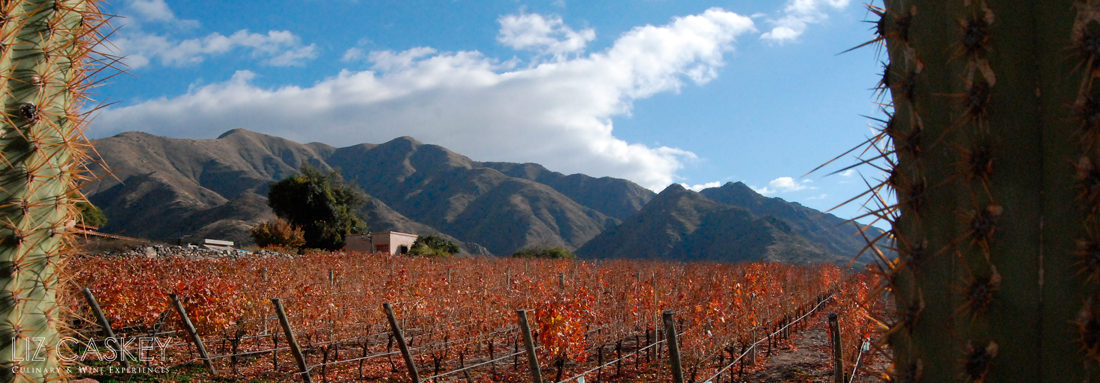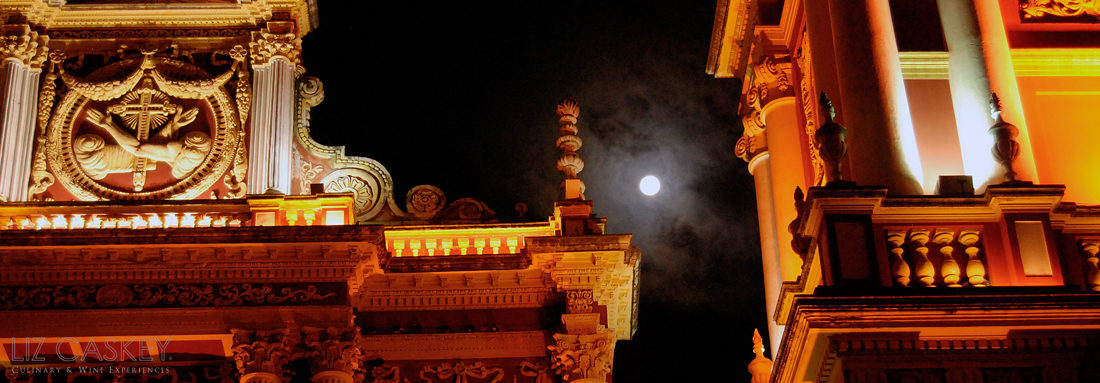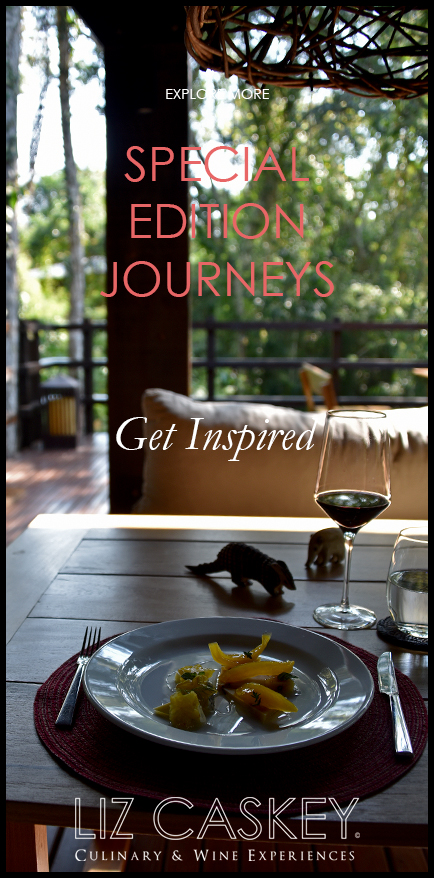Salta
Salta La Linda, the beautiful, is tucked away in the remote northwestern corner of Argentina. Falling closer in proximity, geography, and culture to Peru and Bolivia than the rest of the country, it has some of the best-preserved colonial architecture in Argentina, jaw-dropping scenery, and spicy, flavorful cuisine.
Throughout the region, the landscape changes dramatically from the barren, dream-like altiplano to rocky red canyons, lush forests in the rain shadow, steep mountainsides, and towering cardones (cacti). Reminiscent of a Wild West stage with dry riverbeds and cracked mud plains at the southern end of the province, Cafayate is Salta’s most famous wine town. Here, robust high-altitude wines like Syrah and Torrontés have made a name for themselves.
In fact, Salta is all about awe-inspiring geography, light, and colors. The landscapes seem dreamlike, except they are for real.

Ingredients
Salta is a time warp of different historical periods where Andean and Spanish cultures collide. Salta’s colonial main square has the neoclassical cathedral, frosted in pink and creamy white and streets are lined by whitewashed adobe façades. Further out in the province, dusty villages seem to have been stuck in time. The adobe homes are painted chalk-white and date back to the 16th century, and it’s not uncommon to see a donkey hauling dried chilies down the main street.
Things We Love

Quaint Cachi: A spectacular side trip as a day or overnight from Salta, this is not for the vertigo-challenged as there’s a near-vertical series of mountain switchbacks winding up to 11,000 feet along a partially unpaved road. At the top, the highway descends into a vast plain dotted with towering cardon cacti and wild, fuzzy-eared donkeys. Here, pastures and llama farms create a canvas of striated pink, chalk-white, and green hills. Cachi is an ancient, colonial, frontier town that, despite the dust that blows in from every direction, manages to keep its adobe façades blindingly chalk white. A veritable time warp. Celebrate your arrival with an ice-cold beer on the main plaza.
Regional Artisans: Salta has a strong tradition of artisans where metal workers transform the noble silver alloy, alpaca, into handsome décor items. In the highlands, communities of weavers can still be visited to observe traditional weaving techniques of their lovely woven shawls and blankets, made from alpaca and llama wool. There are also the red ponchos salteños, hand-carvings from native wood, and pottery used for cooking in the many mud ovens found throughout the province. Taking the time to visit artisans in their private homes and learn about their craft is one of the highlights of visiting the region.
The Ultimate Road Trip: To see Salta, you have to hit the road. Roads will take you through rust-red canyons, past sandstone monoliths, and rocks stacked like shards of colored glass. Take your time and gawk at nature’s beauty en route. It’s truly awesome. One of the most exciting ways to arrive in Salta is from the Atacama Desert in Chile, a full-day road trip across the altiplano. Here, vicuñas roam wildly and at nearly 13,000 feet above sea level, the thinner altitude fragments light and color and everything takes on a blue, dreamy hue. Serpentine through desert valleys and take in the palate of reds, khaki, green, and light blue that only appear in this landscape. It’s mystical.
and the meaningful
Hotels

Colome
Surrounded by the rocky, red mountain views, Swiss entrepreneur and art collector Donald Hess built his state-of-the-art winery and boutique estancia hotel literally in one of the most remote locations in the world. At over 7,200 feet above sea level, they not only make the highest altitude wine in the world, but Colomé is also home to the brilliant 18,000-square-foot James Turrell art museum as part of the hospitality project. While on site, you can ride in the arid valleys with the resident horse whisperer, help the chef gather organic vegetables from the garden, or sunbathe with a glass of zingy Torrontes in hand, before heading off to the twilight tour of the museum.
House of Jasmines
This handsome early 1900’s hacienda sits on a secluded ranch just outside of Salta. Surrounded by rambling grounds, the hotel mixes country warmth and French sophistication with a nod to local artisan handicrafts with hand-woven textiles and alpaca, a silver-colored noble metal. Rooms are well-appointed with exquisite linens, hardwood floors, and fluffy duvet covers for the chilly nights. Their excellent restaurant, La Table, specializes in slow-roasted meats in the adobe oven, and all vegetables come from their on-site garden.














